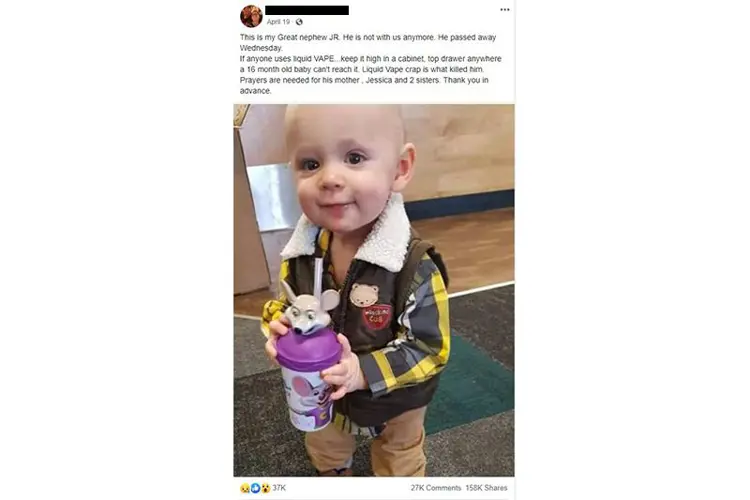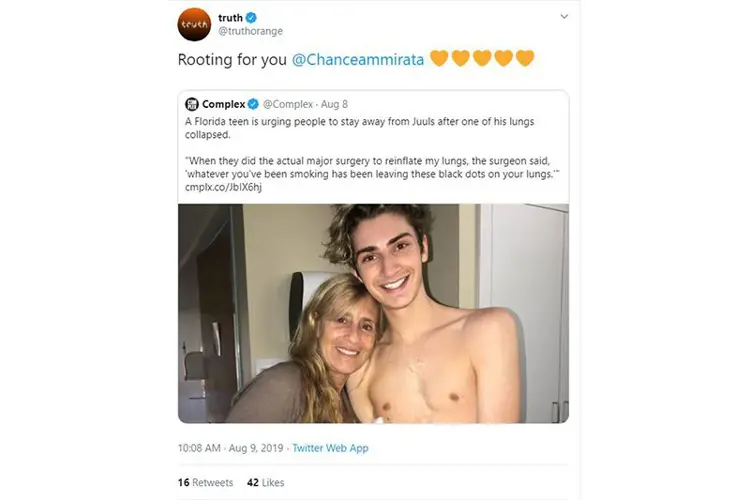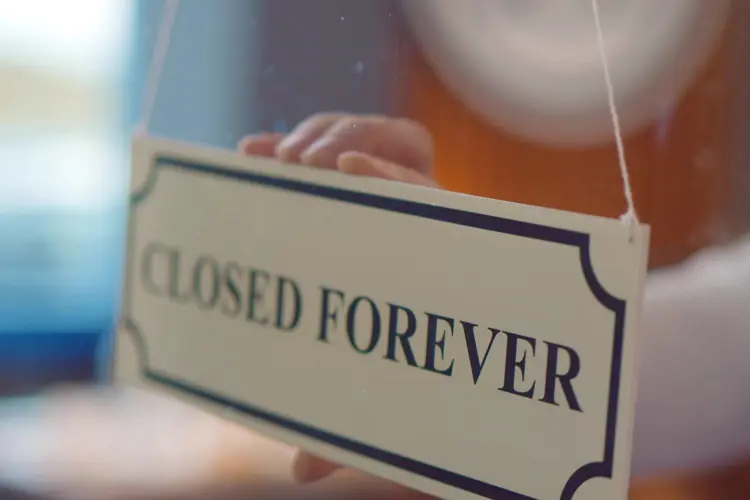People can post anything on social media, and separating what is real from what isn’t can be a lot of work. Of course, by the time you do some research and discover that the post you saw 10 minutes ago is nonsense, it may already have been shared and reshared around the world.
If the post is about a political hot button issue like vaping—especially teen vaping—it can explode online and influence thousands, and maybe millions, of opinions. There’s not much point in answering the poster of a viral vaping story with facts that debunk the post. In fact, by engaging at all, you may just be giving the post more authority on search engines, and spreading the misinformation even further.
It’s hard to resist though. Many social media posts that contain falsehoods or incorrect information about vaping have dozens of responses from angry vapers, valiantly disputing the claims in the face of poorly informed opposition.
And the misinformation isn’t all coming from social media. There are endless examples of what most people consider trustworthy institutions—like state public health agencies—slandering vaping with the thinnest of evidence.
Last week an 18-year-old Florida man named Chance Ammirata took to Instagram and Twitter to make a series of posts about his collapsed lung, which he claimed was caused by using a JUUL. The story was picked up by British tabloid The Daily Mail (which searches social media for such “human interest” stories), and it took off like a rocket.
Ammirata told the Daily Mail that his lung surgeon said the “black dots” on his lungs were caused by vaping. “When they did the actual major surgery to reinflate my lungs, the surgeon said, ‘whatever you've been smoking has been leaving these black dots on your lungs’,” he said.
“I've never smoked cigarettes - it's the Juul,” Ammirata told the paper. He explained that he vaped one JUUL pod every two days for more than a year.
In a long Instagram post, he explained that the experience has given him a new purpose in life.
“I came into this experience completely negative mad at the world, and scared of how things were gonna turn out after my lung collapsed,” he wrote. “But I decided to take this negative and completely find another meaning. I decided that spreading my story could help others not have to go through the same thing as me. One by one reading each message from every single one of you explaining how I was able to CHANGE YOUR MINDSET I was able to help you throw out your juul.”
That IG post has 285,000 likes now, and 16,000 comments. His first Twitter post about the incident has passed 41,000 retweets and 41,000 likes. Ammirata likes being a social media celeb, which isn’t hard to understand. After all, he’s just 18.
He told the Daily Mail that over 100 people have replied to his SM posts, saying he inspired them to throw out their JUULs. He’s sharing their posts using the hashtag #lunglove.
“If I can keep doing that, that's what I'm going to do...I don't want anyone else to end up in the hospital like this,” he told the British tabloid. Ammirata has started a “petition” on Change.org that has more than 3,400 signatures. However, the petition isn’t aimed at anyone in particular; it seems like just another outlet for Ammirata to talk. In fact, after his original posts on IG and Twitter, his posts have gotten very little attention—a common thing after a viral post.
He may assume that everyone who uses a JUUL is like him: a kid having fun vaping. “Cigarettes are totally disgusting garbage,” Ammirata told the Daily Mail. It’s not likely he’s considered the possibility that many of the people who see his posts or read about him in the paper are people who have quit smoking with vapes—or people who have considered switching. He may not even grasp the distinction.
But that’s how it works. Like the FDA’s Real Cost commercials that are supposedly “micro-targeted” at adolescents who have never smoked, people who smoke see these posts too. And some of them believe what they read. Or, if they don’t exactly believe it, it adds one more lingering bit of doubt. By the way, some smokers are kids too, and they may be even more prone to believe misinformation coming from a peer.
Ammirata may not get it—or he may not care—but there are almost certainly people who see his posts and decide to keep smoking cigarettes instead of giving vapes a shot. Ammirata responded to a JUUL tweet about the huge recent drop in cigarette sales with the silly claim that “the majority of your clients are in the age range of 12-18.” Maybe he believes that. Maybe he’s really just a clueless kid. Let’s hope so.
As for the claim that his collapsed lung was caused by juuling, well...someone’s lying. Either the surgeon who repaired his lung was telling Ammirata a white lie to prevent him from vaping again, or the young man is making up the story about what the doctor said.
The kind of lung collapse that Chance Ammirata had is caused by spontaneous pneumothorax, a condition caused when air escapes the lungs into the chest cavity. According to the National Institutes of Health, “Primary spontaneous pneumothorax is likely due to the formation of small sacs of air (blebs) in lung tissue that rupture, causing air to leak into the pleural space. Air in the pleural space creates pressure on the lung and can lead to its collapse.”
“Blebs may be present on an individual's lung (or lungs) for a long time before they rupture,” says the NIH site. “Many things can cause a bleb to rupture, such as changes in air pressure or a very sudden deep breath. Often, people who experience a primary spontaneous pneumothorax have no prior sign of illness; the blebs themselves typically do not cause any symptoms and are visible only on medical imaging. Affected individuals may have one bleb to more than thirty blebs.”
The blebs are what Ammirata referred to as “black dots” in his posts. They weren’t caused by juuling, but it is possible that a deep inhalation on a vape could cause a bleb to rupture. Of course, any deep inhalation—with or without a JUUL—could have caused it, as could a fall or a sudden impact of any kind.
Ammirata’s vow to quit vaping may not prevent future lung problems. According to the NIH, “Once a bleb ruptures and causes a pneumothorax, there is an estimated 13 to 60 percent chance that the condition will recur.”
Primary spontaneous pneumothorax is not particularly rare. According to the NIH, it occurs each year on average in 7.4 to 18 per 100,000 men, and 1.2 to 6 per 100,000 women. If vapers are evenly divided by sex, that would mean that among the roughly 10 million Americans that use e-cigarettes, 430 to 1,200 would be expected to suffer spontaneous pneumothorax every year—and that vaping would have nothing to do with it.
One response to Ammirata’s Instagram post was from a man who said he’d also had a pneumothorax. “Hi Chance, so your spontaneous pneumothorax was not caused because of your juul,” wrote the poster called chainsawrootcanal. “It was caused because of your body type. I had a spontaneous pneumothorax (lung collapse) 10 years ago.”
Primary spontaneous pneumothorax “usually occurs in tall, thin males of 10 to 30 years old,” according to Shi-ping Luh of the Department of Surgery at St. Martin de Porres Hospital in Taiwan. Unless caused by a particular gene mutation, “researchers suggest that rapid growth of the chest during growth spurts may increase the likelihood of forming blebs,” says the NIH.
Long-term smoking (not short-term juuling) is a risk factor among older victims, but that is a completely different kind of event than the more common primary event seen in tall, thin boys and young men. “Secondary spontaneous pneumothorax usually occurs in older people with underlying pulmonary disease, such as emphysema or asthma, acute or chronic infections, lung cancer, and congenital diseases including cystic fibrosis, catamenial pneumothorax, or lymphangioleiomyomatosis,” writes Dr. Luh. In other words, pneumothorax caused by smoking (or, theoretically, by vaping) is the result of many years, or likely decades, of lung damage.
Ammirata’s doctor would have known all that. If he lied to his patient, shame on him. If Ammirata made it up to achieve viral internet fame, well, that seems more likely.
“Stop trying to get famous because of your medical condition that you can loosely tie to vaping,” wrote Ammirata’s IG nemesis chainsawrootcanal. But Chance Ammirata would hardly be the first person to make up a story to grab the fleeting fame that is internet celebrity. He won’t be the last either. And vaping, which is the teenage fad that America currently loves to hate, is ripe for exploitation by would-be viral fame seekers of all ages.
JUUL itself has been a target before. Early last year, we reported on a viral rumor that traveled between college campuses about JUUL causing lung cancer. The company was concerned enough that it released a public statement about the baseless stories, which were mostly spread through emails that were constructed like old-fashioned chain letters.
Last February on Twitter, a young Florida woman named Abbey claimed to have been diagnosed with “bronchiolitis obliterans (popcorn lungs).” It was retweeted 13,000 times and received more than 20,000 likes. There is no telling how many vapers went back to smoking after seeing her baseless claim.
There is no fighting a weapon like a viral tweet. If you respond with facts, your voice is lost in the noise. If you ignore it, the result is the same. Most people who saw the tweet don’t know that vaping doesn’t cause popcorn lung. It’s just one more drop of poison in the well—impossible to prevent, and impossible to fix after it happens.
In April of this year, an Arkansas woman described on Facebook how her 16-month-old great nephew died from (presumably drinking) “Liquid Vape crap.” I spent two days trying to chase down this story—messaging the poster (she didn’t respond), searching online, and contacting newspapers. There was no such incident, or if there was, authorities kept it quiet (which is very unlikely). But 158,000 people believed it and shared the story. How many have seen her post, which is still receiving comments to this day? Probably several million.
Chance Ammirata’s collapsed lung isn’t the real story here. Rather it’s the speed at which his posts were seen by many thousands—or maybe even millions—of people. “Falsehood flies, and the Truth comes limping after it,” wrote Jonathan Swift in the 18th century, and it happens a million times faster now. A social media post that catches fire can travel around the world in minutes, and the number of people who see it can expand explosively.
What can vapers do to fight these viral posts? Not much. Probably the best thing is to avoid giving them further exposure. Don’t respond, and definitely don’t share—not even with an explanation. Use screencaps if you want to reference the post.
Of course, it probably won’t help. The people spreading lies and half-truths automatically make a lot of powerful friends. Chance Ammirata even got a message of solidarity from Truthorange, the Truth Initiative’s hipstery advertising brand.
“Rooting for you, @chanceammirata,” Truth wrote, next to five little orange hearts.
The Freemax REXA PRO and REXA SMART are highly advanced pod vapes, offering seemingly endless features, beautiful touchscreens, and new DUOMAX pods.
The OXVA XLIM Pro 2 DNA is powered by a custom-made Evolv DNA chipset, offering a Replay function and dry hit protection. Read our review to find out more.
The SKE Bar is a 2 mL replaceable pod vape with a 500 mAh battery, a 1.2-ohm mesh coil, and 35 flavors to choose from in 2% nicotine.
Because of declining cigarette sales, state governments in the U.S. and countries around the world are looking to vapor products as a new source of tax revenue.
The legal age to buy e-cigarettes and other vaping products varies around the world. The United States recently changed the legal minimum sales age to 21.
A list of vaping product flavor bans and online sales bans in the United States, and sales and possession bans in other countries.



























